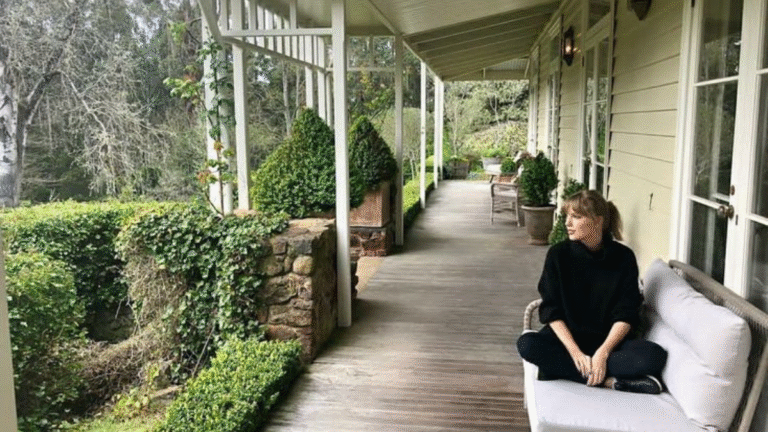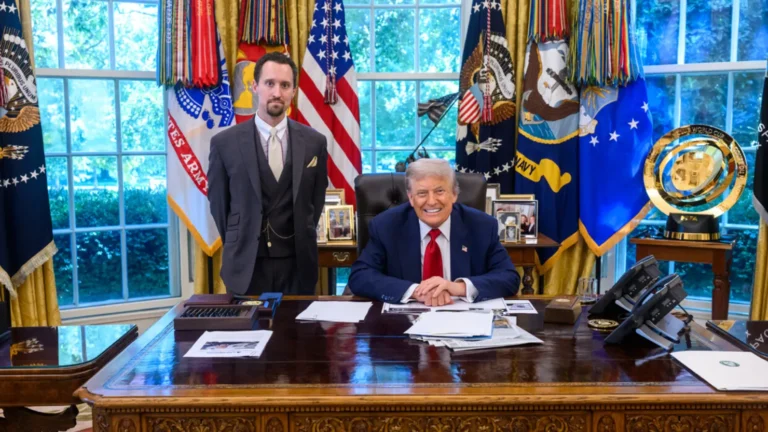
Redford’s commitment to environmental activism was equally deep; he used his fame to raise awareness of conservation issues and support sustainable practices personally and publicly. Throughout his life, Robert Redford embodied the quintessential American dream—a visionary outsider who rose to the pinnacle of fame through his talent and perseverance. His career spanned more than six decades, during which he earned many notable accolades, including multiple Academy Award nominations and wins, Golden Globe honors, and a respected reputation as a versatile actor and a passionate filmmaker.
His performances often connected deeply with audiences, effortlessly capturing the nuances of human complexity.
Redford’s influence extended beyond the silver screen. He was a dedicated philanthropist who founded organizations that promoted arts education and environmental conservation. His efforts helped preserve natural landscapes and promote sustainable living, reflecting his lifelong commitment to protecting the planet. His leadership in these areas earned him praise from colleagues and fans alike, further cementing his legacy as not only an artist, but also a conscientious citizen.
Thank you for reading this post, don't forget to subscribe!News of Redford’s passing at his home in Utah has stunned the entertainment world and beyond.
Colleagues, friends, and fans have expressed their condolences and admiration, celebrating his extraordinary contributions. Many remember his engaging presence on set, his unwavering dedication to storytelling, and his humility despite fame. His influence can be seen in the countless actors and filmmakers inspired by his work and his advocacy. When we consider the life of Robert Redford, it becomes clear that his legacy is one of artistic excellence, activism, and pioneering spirit.
His films continue to inspire audiences, and his efforts to support independent cinema have opened doors for generations of storytellers.
Though he has left us, his contributions will remain immortal, inspiring new creations and guiding future artists to pursue their dreams with passion and integrity. Ultimately, Robert Redford’s life was a testament to the power of cinema to challenge, inspire, and connect people across borders. His passing is the end of an era, but his spirit lives on in the countless lives he touched and in the indelible collection of works he left behind. Rest in peace, Robert Redford – an icon whose legacy will continue to illuminate the film world and beyond.
Born in Santa Monica, California, in 1936, Charles Robert Redford Jr. is a figure whose life story embodies

the quintessential American journey of aspiration, reinvention, and artistic discovery. Raised in a simple, working-class family in South Los Angeles, Redford’s early years were marked by a deep connection to community and the art of storytelling. His childhood was influenced by visits to the local library, where he immersed himself in books, and simple entertainment such as radio programs and comic strips. These simple pleasures ignited his lifelong passion for stories and their power to unite and inspire. His family’s move to Van Nuys, a more suburban area, was a change he disliked intensely.
Moving from the vibrant, diverse neighborhoods of South Los Angeles to the quieter environs of Van Nuys felt like a disconnect from the community that had nurtured his early interests.
Still, he did not give up and graduated from high school in 1954, and soon after, enrolled at the University of Colorado on a baseball scholarship. However, his addiction to alcohol undermined his athletic skills, causing him to give up sports and seek new directions. Eager to explore his artistic interests, Redford went to Paris, where he studied painting. This experience broadened his perspective and deepened his understanding of visual storytelling. Still, it was theater and acting that truly fascinated him, providing him with a way to confront and challenge his pretentiousness and self-awareness. Acting became his chosen path—a way to explore human nature and connect with others on a deeper level.
Early in his career, Redford worked extensively in theater and television.

His appearances in acclaimed series such as “Playhouse 90”, “Perry Mason”, “Alfred Hitchcock Presents” and “The Twilight Zone” demonstrated his versatility and talent. His film debut in 1962’s “War Hunt” launched a distinguished acting career that laid the foundation for his later emergence as a leading actor. Moving into filmmaking, Redford earned a reputation for thoughtful ideas and a true cinematic style. His work often reflected his personal beliefs, especially in terms of environmental issues and social justice. He became an outspoken advocate for issues such as the rights of American Indians, offshore oil exploration, and global warming—issues he believed required urgent attention.
Despite believing that movies alone rarely change political views, Redford used his platform to raise awareness and promote dialogue about important social concerns.
Throughout his career, Redford exemplified a commitment to honesty and authenticity both on and off screen. His journey from a working-class boy from Los Angeles to Hollywood star and influential filmmaker underscores his life dedicated to storytelling, activism, and the pursuit of meaningful change. His legacy continues to inspire generations of artists and activists, reflecting his deep belief in the power of cinema to reflect truth and inspire reflection.
The late director, renowned for his compelling romances imbued with political themes, left an indelible mark on American cinema.
His films often focused on complex social issues, yet maintained his distinctive style of thoughtful storytelling and rich character development. A frequent collaborator of Robert Redford, he played a key role in shaping the actor’s early career and directed him in the 1966 film “This Property Is Condemned.” The film featured Redford in a role that highlighted his emerging talent, and the collaboration began a fruitful working relationship between director and actor. Robert Redford’s rise to stardom did not happen immediately. Initially, he was a relatively unknown stage actor who worked tirelessly in the theater with modest recognition.
His breakthrough came when acclaimed director Mike Nichols cast him in the lead role in Neil Simon’s Broadway comedy “Barefoot in the Park,” released in 1963.
Redford’s charming performance charmed both audiences and critics, establishing him as a new talent.
The success of the play was easily reflected on the big screen, where Redford reprised his role opposite Jane Fonda in the film adaptation. This performance earned him widespread praise and established him as the new Cary Grant, with a blend of sophistication and common man charm that appealed to audiences. The success of “Barefoot in the Park” brought Redford to the Hollywood spotlight, but it was his subsequent role in “Butch Cassidy and the Sundance Kid” (1969) that took his career to new heights. Starring opposite Paul Newman, Redford played the charismatic and witty Sundance Kid in this iconic Western.
The film was a huge success, becoming the highest-grossing Western of all time, and established Redford as a leading actor with great comedic timing and a charming screen presence. Redford recalled making this film as one of his most enjoyable experiences on set. He also openly credited Paul Newman for his early success and praised the veteran actor’s guidance and friendship, which continued even off the cameras. After “Butch Cassidy”, Redford continued to demonstrate his versatility with roles in films such as “Downhill Racer” (1969), where he played a competitive Olympic skier, and “The Hot Rock” (1972), a heist comedy that showcased his comedic talents.
His collaboration with director Sydney Pollack deepened when they reunited for “Jeremiah Johnson”, a stark and introspective portrayal of a mountain man surviving in the wilderness. In this film, Redford played a mountain man facing various hardships, further demonstrating his ability to play complex and varied characters. Throughout his career, Redford remained committed to projects that challenged audiences and inspired thought, often engaging with the political themes his director friends favored. His partnerships with filmmakers and actors helped define an era of cinema that struck a balance between entertainment and social consciousness.
Redford’s talent in moving from stage to screen and his collaborations with visionary directors ensured his place as one of Hollywood’s most enduring and influential figures.An iconic figure in acting and filmmaking, Robert Redford has left an indelible mark on American cinema and culture. Recognized by the American Film Institute as having made one of the 100 best films of all time, Redford’s work has consistently exemplified artistic excellence and the art of storytelling. Renowned Los Angeles Times critic Charles Champlin once called Redford a “classic,” emphasizing his lasting influence and his sophisticated screen presence.
Redford’s interest in political intrigue and current events became apparent early in his career.
In 1972, in the midst of the Watergate scandal that ultimately brought down a presidency, Redford played an active, almost secretive role in journalistic history. He persuaded legendary Watergate reporter Bob Woodward to meet with him secretly in Washington, D.C., as the scandal was just beginning to unfold. Redford later explained that Woodward was initially skeptical, unsure if the man he was meeting was a true ally or part of a conspiracy. The atmosphere was tense—surveillance cameras, hidden microphones, and the pervasive paranoia that characterized the Watergate investigation created an atmosphere full of uncertainty.
Redford’s secret meeting underscored his deep interest in political matters and his desire to understand and connect with the truth behind the scandal.
Even before Woodward’s book detailing the Watergate investigation was completed, Redford was actively involved with the media and the story. His fascination with the events led him to acquire the film rights to Woodward’s account through Warner Bros. in 1974 for $450,000. The move signaled his dedication to transforming real-life political intrigue into compelling cinema, an obsession that culminated in the critically acclaimed film “All the President’s Men,” which vividly depicted the investigative journalism that exposed the Watergate conspiracy.
In addition to his work in front of and behind the camera, Redford played a key role in promoting independent and innovative cinema. In 1978, his close production partner Sterling Van Wagenen launched the American Film Festival in Utah, a pioneering event dedicated to showcasing independent films. This initiative laid the foundation for what eventually became the Sundance Institute in 1981, founded on Redford’s own Utah property. The Sundance Institute became an important incubator for emerging filmmakers, providing them with resources, guidance and a platform to showcase their work.
Under its auspices, numerous acclaimed films such as “El Norte” and “The Trip to Bountiful” gained recognition and audiences, helping to redefine American cinema by emphasizing diverse stories and independent voices. Redford’s sporadic appearances in films, interviews and public events often reflect his broader commitment to storytelling and cultural engagement. His influence extends far beyond his on-screen charisma, symbolizing his dedication to supporting the arts and highlighting important social issues.
Through his activism, mentorship and cinematic accomplishments, Robert Redford has cemented his legacy as a visionary artist and a passionate supporter of independent filmmaking. Renowned for his distinguished career in film, Robert Redford starred alongside Debra Winger and Darryl Hannah in the 1986 romantic comedy “Legal Eagles.” Although the film was not well received by critics or audiences, Redford’s performance remains a testament to his versatility as an actor.
Despite his fame and Hollywood success, Redford chose to live a relatively private life away from the spotlight. He lived primarily in the tranquil landscapes of Utah and Napa Valley, where he found solace and inspiration amid nature. Prior to his marriage in 2009, he raised four children with actress and producer Lola Van Wagenen in New York City. The couple divorced in 1985, closing an important chapter in his personal life. In 2009, Redford married Sibylle Szaggers, a talented German artist, further reflecting his love for creative pursuits beyond acting. Throughout his life, Redford has balanced his Hollywood career with his devotion to family and love of art and nature.







